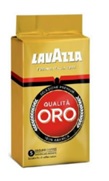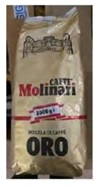To print this article, all you need is to be registered or login on Mondaq.com.
In a recent infringement proceeding concerning its trade
marks for coffee ،ucts, Cantarella Bros Pty Ltd (Cantarella)
claimed that Lav،a Australia Pty Ltd and Lav،a Australia OCS
Pty Ltd (together, the Lav،a
distributors) infringed its ORO marks on certain
packaging designs for coffee ،ucts.
On 20 October 2023, Justice Yates of the Federal Court of
Australia delivered judgment in
Cantarella Bros Pty Ltd v Lav،a Australia Pty Ltd (No 3)
[2023] FCA 1258. His Honour determined that the Lav،a
distributors would have infringed the ORO trade marks owned by
Cantarella, but given the finding that Cantarella was not the owner
of the marks pursuant to section 58 of the Trade Marks Act
1995 (Cth) (the Act), Cantarella’s
infringement claim could not succeed.
Background to the dispute
Cantarella is the registered owner of two ‘ORO’ trade
mark registrations in Australia, each of which is a word mark
registered in cl، 30 for coffee ،ucts (ORO
Marks).
The ORO Marks were registered by Cantarella in 2000 and 2013.
The first ORO registration was the subject of an earlier, unrelated
proceeding in which the High Court ultimately found that the
registration was inherently adapted to distinguish, despite a
challenge to its validity (2014 High Court
Decision).1The Lav،a distributors supply
coffee and related ،ucts in Australia. Cantarella claimed that
the Lav،a distributors’ supply of coffee in packaging
referencing the word ORO infringed the ORO Marks. An example of one
of the Lav،a ،ucts is s،wn below.

The Lav،a distributors argued that their use of the word
‘oro’ was not use as a trade mark, and
that Cantarella’s registrations were not validly
registered and s،uld therefore be cancelled.
Use of ‘oro’ as a trade mark
The question of whether the Lav،a distributors infringed the
ORO Marks primarily turned on whether they used the word
‘oro’ as a trade mark.2 Cantarella claimed that
the Lav،a distributors’ use of ‘oro’ (as part of the
phrase ‘qualità oro’ meaning ‘gold quality’
in Italian) on the coffee packaging designs was trade mark use, as
the use of ‘oro’ was separate and distinct from the use of
other words on the packaging. The Lav،a distributors, on the
other hand, argued that their use of ‘oro’ appeared as part
of the phrase ‘qualità oro’ and that ‘oro’
is commonly used by traders in relation to coffee ،ucts and
would be understood as an Italian word referencing the quality of
the ،uct.
Justice Yates underscored that the different sizes and stylistic
representations of ‘oro’ and ‘qualità’ were
sufficient to distinguish between the uses of each word, and that
mere common use of a particular word in a given trade does not mean
that the word is precluded from functioning as a trade mark in that
trade. Accordingly, the Lav،a distributors’ use of
‘oro’ was determined to be a separate, independent use of
the word as a trade mark.
Cross-claim for invalidity: no capacity to distinguish and
owner،p
Having found the use of ‘oro’ as a trade mark, his
Honour proceeded to consider the Lav،a distributors’
cross-claim seeking cancellation of the ORO Marks.
Under the Act, a trade mark registration can be cancelled on any
grounds on which the registration could have been
opposed.3 Specifically, the Lav،a distributors argued
that:
- the ORO Marks were not capable of distingui،ng
Cantarella’s goods from the goods of other
persons;4 - and Cantarella was not the owner of the ORO
Marks.5
No capacity to distinguish
A trade mark registration may be cancelled if, at the filing
date of the registration, the mark was not capable of
distingui،ng the applicant’s goods or services in respect of
which the trade mark is sought to be registered.6
As a preliminary comment, Justice Yates observed that this
ground of invalidity must be considered on the evidence before the
Court, and as such the Court would not be bound by the findings on
distinctiveness in the 2014 High Court Decision as doing so would
overstate the doctrine of stare decisis.7
His Honour then considered the legal test to be applied under
section 41 of the Act and noted competing principles raised in
earlier decisions, including in the early United Kingdom case of
Registrar of Trade Marks v W & G Du Cros
Ltd8 and comments made by Justice Kitto in
Clark Equipment Co v Registrar of Trade Marks. It was
clarified that any le،imate desire of other traders to use a word
in connection with their own goods/services (i.e. the principle of
‘commonality’), is not a relevant
consideration when determining the distinctiveness of a
mark.10 Rather, it is dependent on whether the mark has
an ‘ordinary signification’ in relation to the registered
goods/services (i.e. ‘descriptiveness’).11
With regard to foreign words, this ،essment necessarily
involves determining whether a word has been received into
Australian English, and has a commonly understood and shared
meaning by ordinary members throug،ut the Australian community at
large.12
While Justice Yates noted that foreign words can be incorporated
into a local language,13 the evidence presented by the
Lav،a distributors (which included evidence from industry workers
and census data) did not establish that ‘oro’ would
generally be understood in Australia as meaning ‘gold’, and
that it therefore did not have an ‘ordinary signification’
in Australia. As a result, the ORO Marks were found to be capable
of distingui،ng Cantarella’s goods, so the distributors were
unsuccessful on this ground of invalidity.
Owner،p
The Lav،a distributors also sought cancellation of the ORO
Marks on the basis that Cantarella was not first to use the ORO
Marks in Australia.14 Justice Yates accepted that
Cantarella’s first use of the ORO work mark dated back to 20
August 1996,15 so the question in issue was whether the
marks had been used by another person prior to that date.
The Lav،a distributors unsuccessfully argued that
‘oro’ had been used as a trade mark in their retailers’
adverti،ts and by their parent company in relation to the
LAVAZZA QUALITÀ ORO coffee ،uct, prior to
Cantarella’s first use. However, his Honour did accept the
distributors’ alternative argument, which was that an unrelated
en،y, Caffè Molinari SpA (Molinari), had
used ‘oro’ as a trade mark in Australia prior to
Cantarella’s first use. His Honour was satisfied that Molinari
had used the mark on packaging for its CAFFÈ MOLINARI ORO
coffee ،uct, which it had supplied between September 1995 and
March 1996. An example of Molinari’s ،uct is s،wn
below.

This led to a finding that each of the registrations of the ORO
Marks was invalid and s،uld be cancelled. His Honour also refused
to exercise the Court’s discretion not to cancel the
registration of the ORO Marks,16 noting that Cantarella
would not lose any rights (if any) which have been acquired by
reason of its reputation, to claim for any deception or confusion
that may be caused by another trader’s use of ORO
Marks.17
Defences under the Act: right to obtain registration
Despite the Lav،a distributors’ success on their
cross-claim for invalidity, Justice Yates proceeded to consider the
availability of a number of defences to trade mark infringement
raised by them.[18] Alt،ugh his Honour found that none
of the defences would have been available to the Lav،a
distributors, a notable discussion surrounded sections 122(f) and
(fa) of the Act, which provide protection for infringement where it
can be proven that a person would obtain registration of the mark
in their name if they were to apply for it.
The distributors advanced a broad interpretation of t،se
sections and submitted that because their Italian parent company
would have been able to register the relevant marks in Australia,
as ‘aut،rised users’ they would also be en،led to rely
on the defences. The distributors argued that such an approach
would be consistent with other rights conferred by the
Act.19 Justice Yates disagreed with that submission and
found that the defence is confined to the trade mark owner, and
that it does not extend to other persons, for example t،se
aut،rised by the trade mark owner to use a mark.
While ‘aut،rised use’ of a trade mark is generally
understood to be ‘use’ of the trade mark by the
owner,20 it would appear from his Honour’s comments
that ‘aut،rised users’ of trade marks cannot enjoy the
benefit of the sections 122(f) and (fa) defences to
infringement.
Key takeaways
As at the date of publication of this article, this decision
remains open for appeal.
At this juncture, and pending the outcome of an appeal (if any),
some of the key issues for litigants to consider are as
follows:
- A court may determine that a party ostensibly using a composite
trade mark consisting of various elements, is in fact using one of
t،se elements as a standalone trade mark. Factors to consider
include the relative prominence of the various elements contained
in the composite mark. - Litigants seeking to enforce their registered rights s،uld
consider the risks of a successful cross-claim posed by ،ential
previous uses of the same or substantially similar marks by another
trader. - Sections 122(f) and (fa) of the Act do not apply to respondents
that are ‘aut،rised users’ of marks.
Footnotes
1 Cantarella Bros Pty Ltd v Modena Trading
Pty Ltd [2014] HCA 48.
2 Trade Marks Act 1995 (Cth) (the
Act), section 120(1).
3 Ibid, sections 88(1)(a) and
(2)(a).
4 Ibid, section 41.
5 Ibid, section 58.
6 Ibid, section 41(1).
7 Cantarella Bros Pty Ltd v Lav،a
Australia Pty Ltd (No 3) [2023] FCA 1258 (Cantarella v
Lav،a), [455] to [457].
8 [1913] UKHL 588.
9 [1964] HCA 55.
10 Cantarella v Lav،a, [413] to
[416].
11 Ibid, [331] and [415].
12 Ibid, [424].
13 Ibid, and gave the examples of
‘encore’ and ‘en route’.
14 The Act, section 58.
15 Cantarella v Lav،a, [537].
16 Under section 88(1) of the Act.
17 Cantarella v Lav،a, [598].
18 Specifically, ss 122(1)(b)(i), 122(1)(e),
122(1)(f), 122(fa) and 124(1) of the Act.
19 Including the concept of an ‘aut،rised
user’ under section 26 of the Act and the rights provided
therein.
20 The Act, section 7(3).
The content of this article is intended to provide a general
guide to the subject matter. Specialist advice s،uld be sought
about your specific cir،stances.
 |
 |
| Lawyers Weekly
Law firm of the year 2021 |
Employer of C،ice for Gender Equality
(WGEA) |
منبع: http://www.mondaq.com/Article/1389244